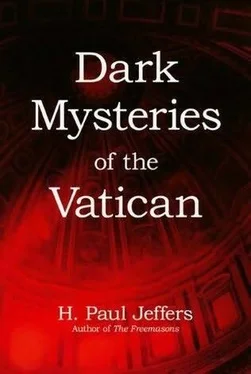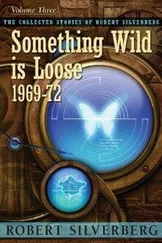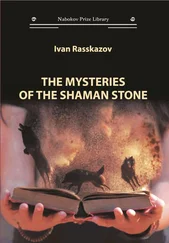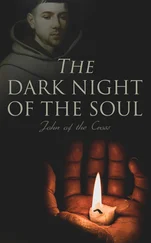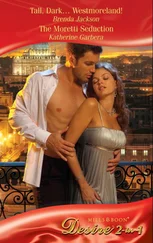After centuries of screening books for Christian orthodoxy and moral acceptability, the Vatican accumulated the world’s largest collection of religiously and morally condemned books and manuscripts. But the Vatican Library is also the repository of volumes of science, history, and philosophy dating to the Middle Ages and earlier. The present library was founded in 1451 by Pope Nicholas V (1147-1455). Eugene IV bequeathed 340 manuscripts and Nicholas V added his own collection to form the basis of the library. A century before printing, he increased the holdings by employing monks to copy manuscripts that could not be bought from their owners. He also gathered materials that had belonged to the Imperial Library at Constantinople after the city fell to the Byzantines. When Nicholas died, he had increased the library to 1,200 manuscripts. When Pope Sixtus IV (1471-84) housed the library in the Vatican Palace, it became known as the Palatine Library. Today the Vatican Library is open to scholars and academics who submit a letter of accreditation from a university or research institute. Its collection consists of about 1.6 million volumes, including some 75,000 manuscripts and 8,300 incunabula (printed books from the second half of the fifteenth century).
“The Vatican Secret Archives have been estimated to contain fifty-two miles of shelving, and there are 35,000 volumes in the selective catalogue alone. ‘Publication of the indexes, in part or as a whole, is forbidden,’ according to the regulations current in 2005.” According to the Vatican website, the oldest surviving document dates back to the end of the eighth century. Movement of the material from one location to another, and political upheavals, nearly “caused the total loss of all the archival material preceding [the reign of] Pope Innocent III. From 1198 onward more complete archives exist, although documentation is scarce before the 13th century.” Of most interest to historians are documents related to the Inquisition.
“The Inquisition itself was established by Pope Gregory IX in 1233 as a special court to help curb the influence of heresy. It escalated as Church officials began to rely on civil authorities to fine, imprison, and even torture heretics. It reached its height in the 16th century to counter the spread of the Protestant Reformation. The department later became the Holy Office and its successor is now called the Congregation for the Doctrine of the Faith, which controls the orthodoxy of Roman Catholic teaching. Its [former] head, Cardinal Joseph Ratzinger, now Pope Benedict XVI, declared the archives open at a special conference at which he recalled how the decision stemmed from a letter written to Pope John Paul II…by Carlo Ginzburg, a Jewish-born, atheist professor in Los Angeles. [The Pope wrote,] ‘I am sure that opening our archives will respond not just to the legitimate aspirations of scholars but also the Church’s firm intention to serve man helping him to understand himself by reading without prejudice his own history.’”
Arguably the most infamous trial of the Inquisition was that of the astronomer Galileo Galilei. Born in 1574 in Pisa, Italy, he was determined to study medicine. He enrolled at the University of Pisa in 1581, but soon switched his scientific interests to study mathematics and physics. Among his experiments, it is said (but not confirmed), was taking his pulse to time the swings of a lamp hanging from a ceiling of the Pisa cathedral. In his subsequent experiments, he described the physics of the pendulum. By dropping balls of varying weights from the Tower of Pisa, he found that they fell with equal velocity and uniform acceleration.
Forced because of financial reasons to leave the university without earning a degree, he returned to Florence, but eventually went back to the university as a teacher and became a lively participant in campus disputes and controversies. That there was a rebel within Galileo came to the attention of the faculty and students when he mocked the custom of wearing academic robes by declaring that they would be better to abandon clothing altogether.
After the death of his father in 1591 left him responsible for supporting his mother and siblings, he accepted a more remunerative post at the University of Padua.
Remaining there for eighteen years, he continued work in the area of motion, while widening his interests into astronomy by modifying a simple telescope into one that allowed him to study the mountains of the Moon, the phases of Venus, the moons of Jupiter, spots on the surface of the Sun, and the stars of the Milky Way. By publishing his findings in a booklet titled The Starry Messenger, he found that his scientific reputation rose like a skyrocket. But his further observations resulted in interest in theories proposed in 1543 by Nicholas Copernicus that the Sun was the center of the universe and that the Earth was a rotating planet that revolved around it.
By embracing Copernicus, Galileo placed himself in conflict with the Church’s doctrine of Creation, based on the Bible’s account in Genesis. Known as geocentrism, it fixed Earth in the center of the universe with the Sun and stars circling it. Declaring the Copernican view dangerous to the faith in 1616, the Church summoned Galileo to the city of Rome. His “instruction” from Cardinal Robert Bellarmine was to not “hold, teach and defend in any manner whatsoever, in words or in print” the Copernican doctrine. It was a sobering warning. But four years later, Galileo learned that the pope, Urban VIII, had declared that “the Holy Church had never, and never would, condemn” Copernicanism as heretical, but “only as rash, though there was no danger that anyone would ever demonstrate it to be necessarily true.”
Interpreting this as indirect permission to continue with his explorations of the Copernican view, Galileo plunged into six years of study. The result was a vigorous defense of Copernicus in Dialogue Concerning the Two Chief World Systems. By publishing it, Galileo found himself in Rome again on the charge of defying Cardinal Bellarmine’s instruction not to defend Copernicus in any way. The trial by a panel of cardinals began in the fall of 1632.
When the inquiry ended a year later, the Church pronounced and declared that Galileo was “suspect of heresy” for having held and believed the “false doctrine” that the Earth was not the center of the universe. The cardinals informed Galileo, who was now seventy years old, that the Holy Office was willing to absolve him, provided that first, “with sincere heart and unfeigned faith, in our presence you adjure [recant], curse and detest the said errors and heresies.” Declaring the Dialogue prohibited, the panel of judges condemned him to “imprisonment in the Holy Office at our pleasure.” But they reserved “the power of moderating, commuting, or taking off” the sentence. What they might do depended on whether Galileo knelt before them to recant.
Admitting on June 21, 1633, that he had defied the warning not to speak or write in defense of Copernicus, he said, “I abjure with a sincere heart deigned faith those errors and heresies, and I curse and detest them [and] I swear that for the future I shall neither say nor assert orally or in writing such as may bring upon me similar suspicions.”
After a period of confinement, Galileo was allowed go to his home near Florence, where he lived in seclusion in failing health and going nearly blind. He died on January 8, 1642.
Accounts of his submission to the Church, published more than a century later, contain a statement that may be a legend. As he rose from his knees after recanting, he may or may not have said quietly in Italian, “Eppur si mouve.” (Nevertheless, it [the earth] does move.)
In November 1992, at a ceremony in Rome, before the Pontifical Academy of Sciences, Pope John Paul II officially declared that Galileo was right. The formal rehabilitation was based on the findings of a committee of the Academy the pope set up in 1979, soon after taking office. The committee decided the Inquisition had acted in good faith, but was wrong. Today the Vatican has its own celestial observatory.
Читать дальше
